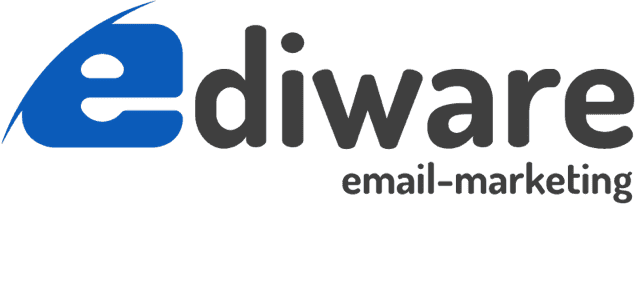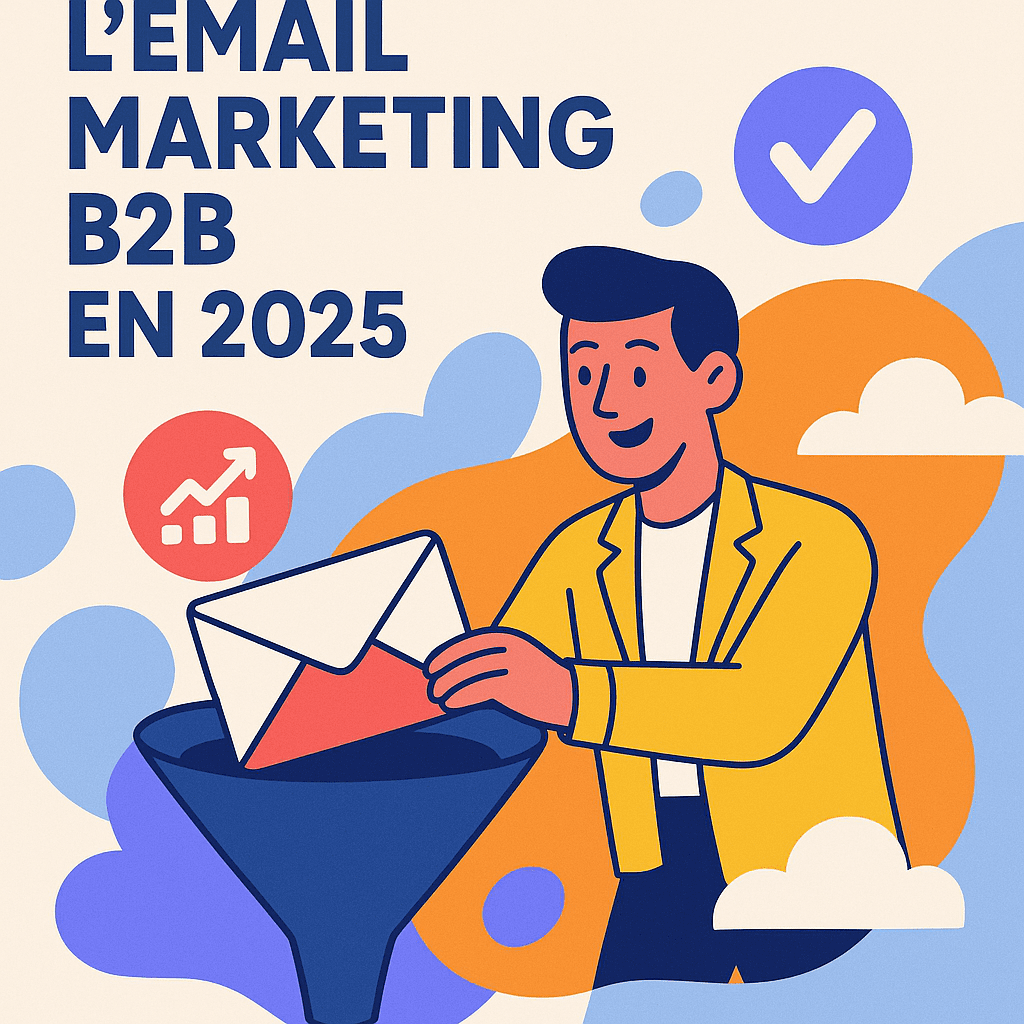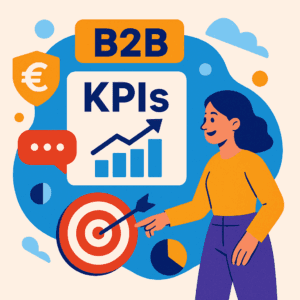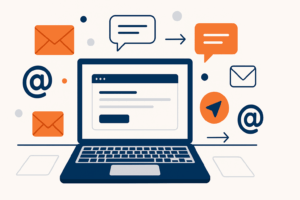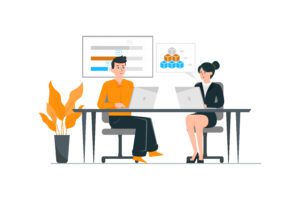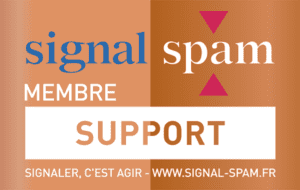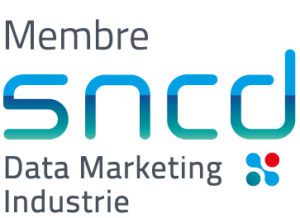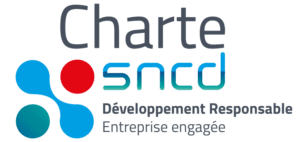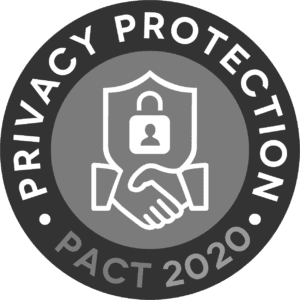Since 2007, people have been predicting the death of email marketing. Facebook would replace it. Then Slack. Then WhatsApp. And yet, in 2025, email remains the most profitable marketing channel for companies selling B2B. The figures are clear: a return on investment of 36 to 42 euros for every euro spent.
Why this guide now? Because 2025 marks a turning point. Artificial intelligence is transforming personalization. Microsoft imposes drastic new authentication rules. The RGPD is getting tougher. French professionals receive an average of 20 to 29 emails a day, a figure that climbs to 40 for managers and 80 for executives, according to a study by the Observatoire de l’Infobésité et de la Collaboration Numérique (OICN) in 2024. Making a difference has never been so difficult… or so profitable for those who know how.
This guide is aimed at companies who want to turn their email marketing campaigns into a machine for generating qualified B2B leads. We’ll look at how to build a solid strategy, create campaigns that convert, intelligently automate your sends and measure your return on investment. All with concrete examples and immediately applicable advice.
Ready to make email your best sales tool? Let’s get started.
1. The fundamentals of B2B email marketing
B2B email marketing is not simply a professional version of consumer email marketing. It’s a world in its own right, with its own codes, constraints and specific opportunities. Understanding these nuances makes all the difference between a campaign that generates qualified leads and one that ends up in the inbox.
The fundamental difference between B2B and B2C
In B2C, you’re selling to a person who decides on his or her own, often on a whim. In B2B, you’re talking to a decision-making committee. The sales person wants features, the financial person looks at ROI, the technical person checks integration, and the executive thinks strategy. Your email needs to speak to all these profiles, sometimes simultaneously.
The sales cycle illustrates this difference perfectly. Where a consumer can buy within a few clicks of receiving your promotional email, a B2B sale takes an average of 84 days. Some cycles extend over 6 to 18 months for complex solutions. This means that your email strategy needs to accompany the prospect over time, not just trigger an impulse purchase.
The financial stakes are also changing. The average B2C shopping basket is around 50-100 euros. In B2B, we’re talking thousands, even hundreds of thousands of euros. This difference in scale calls for a more thoughtful, documented and reassuring approach. Your e-mails must gradually build trust.
The three pillars of a successful B2B email strategy
First pillar: the qualified base. In B2B, quantity does not equal quality. Better 1,000 perfectly targeted contacts than 100,000 generic addresses. A qualified database starts with complete data: surname, first name, company, function, business sector. But above all, it’s behavioral information: what content have they downloaded? Which pages did they visit? Which webinars did they attend?
Qualification also involves technical validation. A bounce rate of over 5% destroys your reputation as a sender. Messaging providers such as Microsoft and Google penalize negligent senders. Regularly cleaning up your database, checking addresses before importing, deleting inactives: these basic actions make the difference between a campaign that reaches the inbox and one that ends up as spam.
Second pillar: the relevant message. Relevance in B2B isn’t just about personalizing with the recipient’s first name. It means adapting the content to the sector of activity, the size of the company, the hierarchical level and the stage in the purchasing process. The CFO of an industrial SME has different concerns than the marketing manager of a tech startup.
Content must provide immediate value. Professionals don’t have time to waste. Every email must answer a question, solve a problem, or shed new light. Case studies, white papers, webinars, ROI calculators: this is the type of content that works in B2B. Pure promotion has little place, except at the end of the sales cycle.
Third pillar: the right timing. Sending the right message at the right time multiplies your chances of success. This starts with respecting business habits: avoiding busy Monday mornings, deserted Friday afternoons and vacation periods. But the real timing is the one that corresponds to your prospect’s career path.
The classic mistake: thinking volume instead of value
Many companies fall into the trap of “always more”. More mailings, more recipients, more messages. This quantitative approach is counter-productive in B2B. Professionals already receive too many emails. Adding to the ambient noise only degrades your image.
The value approach is to send less, but better. Finely segment your base to offer ultra-relevant content. Space out mailings to allow time for the information to digest. Prioritize editorial quality over frequency. This “less but better” philosophy paradoxically generates more results.
The figures confirm it: companies that send 2-3 targeted emails a month have engagement rates 3 times higher than those who bombard their base with 2-3 emails a week. Over-solicitation leads to unsubscribing, or even worse: spamming, which ruins your reputation as a sender.
Here is the second part of the strategy:
2. Build your email marketing strategy
An effective B2B email marketing strategy can’t be improvised. It’s built methodically, aligning every decision with precise business objectives. Too many companies embark on email marketing without a clear vision, sending out random messages in the hope that something will work. This scattered approach generates frustration and wasted resources.
Defining your objectives: the compass of your strategy
Before writing any email, ask yourself the fundamental question: what do I want from email marketing? The answers will vary according to your situation. For a start-up, the objective will be to generate qualified leads to feed the sales team. For an established company, it’s more a question of nurturing: maintaining contact with lukewarm prospects until they’re ready to buy. For a SaaS software publisher, the focus will be on retaining existing customers, with onboarding, training and upsell campaigns.
Each objective calls for a different approach. Lead generation requires high-value educational content: how-to guides, industry studies, expert webinars. Nurturing requires patience and subtlety: regular newsletters, invitations to events, sharing of success stories. Loyalty building relies on proximity: personalized tutorials, alerts on new features, referral programs.
Systematically quantify your objectives. “Generating more leads” is not enough. Instead, aim for “50 qualified leads per month with a score above 70/100”. This precision will enable you to measure your progress and adjust your strategy accordingly. A good objective is SMART: Specific, Measurable, Attainable, Realistic and Time-bound.
Intelligent segmentation: the art of talking to everyone
Segmentation transforms an anonymous database into groups of people with similar needs. In B2B, segmentation criteria are multiple and need to be intelligently combined. Firmographic segmentation remains the basis: business sector, company size, sales, geographical location. A manufacturer of industrial machinery doesn’t have the same needs as a communications agency.
Behavioral segmentation adds a dynamic dimension. It classifies your contacts according to their actions: opening emails, clicking on links, downloading content, visiting the website. A prospect who has downloaded three white papers in one month shows strong interest. He deserves a more direct sales approach than a contact who only occasionally opens your newsletters.
Persona segmentation goes even further. It creates typical profiles based on function, responsibilities and daily challenges. The persona “IT Director of a medium-sized company” is looking for robust, secure solutions. The persona “Marketing manager of a start-up” favors agility and value for money. Each persona receives messages tailored to its specific concerns.
Don’t forget segmentation by stage of the customer journey. A prospect in the discovery phase needs general information about your sector. A prospect in the evaluation phase compares solutions and wants detailed demonstrations. A prospect in the decision phase needs ROI arguments and customer references. Adapting your message to each stage multiplies your chances of conversion.
Scoring: prioritize for better conversion
Lead scoring assigns a score to each contact according to its conversion potential. This approach enables you to concentrate your efforts on the most promising prospects. An effective scoring system combines explicit data (declared information) and implicit data (observed behavior).
Explicit data includes company size (the larger the company, the higher the score), sector of activity (certain sectors convert better), contact function (a decision-maker is worth more than a performer), declared budget. Implicit data tracks engagement: number of emails opened, links clicked, pages visited, forms filled in, content downloaded.
A good scoring system is evolutionary. A prospect who was lukewarm six months ago may become warm after a change in situation: a new budget, a new project, a new manager. Conversely, a promising prospect may become cold if he no longer shows any activity. Scoring must reflect these changes in real time.
Year-round planning: the long-term vision
B2B email marketing is a long-term process. Annual planning helps you anticipate highlights, balance mailings and maintain editorial consistency. Start by identifying the key moments in your sector: trade shows, budget periods, accounting year ends. These events punctuate your prospects’ year, and should be reflected in your editorial calendar.
Plan quarterly themed campaigns. For example: “Process optimization” in Q1 when companies are defining their annual projects, “Cost reduction” in Q2 before the summer budget arbitration, “Innovation and transformation” in Q3 to prepare for the following year, “Review and outlook” in Q4 to capitalize on the past year.
Take into account the seasonal nature of your business. Some sectors have predictable peaks and troughs. The construction industry slows down in August and December. Accounting software publishers are overwhelmed in January-February. Adapting your marketing pressure to these realities improves your relevance and effectiveness.
3. The art of creating campaigns that convert (500+ words)
Creating a B2B email that generates results is as much science as it is art. Every element counts, from the subject line that determines opening to the call-to-action that triggers conversion. To stand out from the crowd, your message must be immediately recognizable, relevant and actionable.
Email subject lines: the decisive 50-character battle
The subject of your email determines its fate in a fraction of a second. On cell phones, only the first 30 to 50 characters are visible. This constraint imposes a ruthless editorial discipline. Every word must earn its place. The formulas that work in B2B rely on concrete value rather than sensationalist hooks.
High-performance objects follow several proven patterns. The promise of direct value: “Reduce your production costs by 23% in 6 months”. The provocative question: “Why do 67% of CRM projects fail (and how can you avoid this pitfall)? The immediate benefit: “Free guide : 15 techniques to optimize your supply chain”. The justified urgency: “Last places left for our March 15 masterclass”.
Absolutely avoid the classic traps. Spam words like “free”, “promo”, “urgent” trigger filters. Excessive capitalization screams amateurism. Multiple exclamation marks betray desperation. Emojis may work in B2C, but are risky in B2B, where professionalism takes precedence.
Personalizing the subject line increases open rates by an average of 26%. But remember: personalization doesn’t just mean inserting your first name. Mentioning the recipient’s company, business sector or an industry-specific challenge creates a stronger connection. For example, “How Schneider Electric reduced its delivery times” will speak more to an industrialist than a generic “Optimize your logistics”.
Engaging content: added value vs. self-promotion
The body of your email must deliver on the promise of the subject line. B2B professionals don’t tolerate disappointment. If you promise a guide to cost reduction, deliver actionable advice, not a sales brochure in disguise. The 80/20 rule applies: 80% added value, 20% maximum self-promotion.
The winning structure follows the AIDA principle adapted to B2B. Attention: a hook that poses the business problem. “Are late deliveries costing you customers?”. Tip: develop the problem with sector-specific data. “73% of B2B buyers change supplier because of repeated delays”. Desire: present your unique approach. “Our JIT 2.0 method has enabled 150 companies to achieve 98% on-time delivery”. Action: a clear, motivating CTA. “Discover the method in our detailed guide”.
B2B storytelling is different from B2C. Forget emotional stories. Instead, focus on documented customer cases, numerical case studies and testimonials from peers. A logistics manager will be more convinced by “How Valeo saved €2.3M thanks to our solution” than by marketing superlatives. Social proof works particularly well: customer logos, certifications, years of experience, number of companies supported.
The optimal length varies according to the objective. For a cold prospecting email, stay under 150 words. For a newsletter, 300-500 words is enough to develop a subject. For a nurturing email with educational content, you can go up to 800 words if the value follows. The important thing is to maintain a fluid reading rhythm with short paragraphs, headings and bulleted lists.
Responsive: the absolute must for 2025
In 2025, ignoring mobile is tantamount to scuttling your campaign. 68% of professionals consult their emails on smartphones, often in transit or between meetings. An email that isn’t responsive instantly loses all credibility. Worse: it risks immediate deletion, or even spamming out of frustration.
Responsive goes beyond technical adaptation. It means rethinking the very design of your emails. Buttons must be at least 44×44 pixels to be clickable with the thumb. Fonts smaller than 14px become illegible. Multiple columns become chaos on a small screen. The solution: adopt a single-column structure with stackable blocks.
Images deserve special attention. Many email clients block images by default. Your message must remain comprehensible without them. Use the alt attribute to describe each image. Limit the total weight to 1 MB to ensure fast loading, even on 4G. Use optimized web formats: JPEG for photos, PNG for graphics, and avoid heavy animated GIFs.
The preheader, the text that appears after the subject line in the email list, becomes crucial on mobile. These extra 75-100 characters should complete the subject line, not repeat it. If the subject line asks a question, the preheader initiates the answer. If the subject announces a benefit, the preheader details how to obtain it.
Advanced personalization: beyond the first name
True B2B personalization transcends basic variables. It adapts the entire message to the context of the recipient. An email sent to the head of an industrial SME will speak of flexibility and rapid ROI. The same email to a purchasing director of a large group will evoke scalability and compliance with corporate processes.
Behavioral data enables dynamic personalization. A prospect who has visited your rates page three times receives a free trial offer. A prospect who has downloaded a technical white paper receives an invitation to an in-depth webinar. This contextual relevance multiplies conversion rates by 5 to 10.
Personalization extends to timing. Analyzing the opening habits of each segment helps optimize sending times. Executives often consult their emails early in the morning (7am-8am) or late in the evening (8pm-10pm). Operational managers prefer late mornings (10-11am), once urgent matters have been dealt with. Support functions are more available in the afternoon (2pm-4pm).
This advanced personalization requires adapted tools. Modern platforms integrate artificial intelligence to predict the best time to send, the most relevant content, even the most eye-catching subject for each recipient. The investment is well worth it: hyper-personalized campaigns generate 6 times more transactions than generic mailings.
4. Automation and multi-channel
Marketing automation has revolutionized B2B email, making it possible to send the right message at the right time without human intervention. Gone are the days when you had to manually schedule each mailing. Automated scenarios now accompany your prospects throughout their buying journey, multiplying contact points while reducing workload.
Nurturing scenarios that really work
Nurturing is the art of maintaining a relationship with a prospect who is not yet ready to buy. In B2B, 73% of leads generated are not immediately mature. Abandoning them would be a waste. A good nurturing scenario patiently accompanies them to commercial maturity.
The welcome scenario remains the most effective. Triggered on registration, it generates 4 times more opens and 5 times more clicks than a standard email. The ideal sequence is spread over 3 to 5 emails. First email: thank you and immediate delivery of the promised resource. Second email (D+3): presentation of your company and expertise. Third email (D+7): customer case in the same sector. Fourth email (D+14): invitation to a webinar or demo. Fifth email (D+21): offer of a telephone conversation with an expert.
The re-engagement scenario targets contacts who have become inactive. After 3 months without opening, a specific sequence attempts to rekindle interest. A straightforward approach works: “We’ve noticed that you don’t open our emails anymore…”. Suggest changing the frequency of sending, changing the themes, or simply unsubscribing cleanly. 45% of re-engaged contacts become permanently active again.
Event-driven scenarios capitalize on key dates. Anniversary of registration, end of trial period, contract renewal: each stage justifies personalized communication. A customer whose contract expires in 60 days automatically receives a renewal sequence: reminder of the benefits obtained, new features available, preferential conditions for loyal customers.
Email + SMS + post: the winning multi-channel triptych
Email alone is no longer enough. Professionals are overwhelmed, inboxes saturated. Multi-channel marketing allows you to reach your targets via different channels, drastically increasing your chances of engagement. Each channel has its own strengths and special moments.
Professional SMS is enjoying a renaissance in B2B. With an open rate of 98% and a response rate of 45% within 3 minutes, it far surpasses email for urgent or important messages. Whether it’s an appointment reminder, delivery confirmation or alert about a limited offer, SMS is guaranteed to be read almost immediately. Beware, however, of the strict legal framework and the higher cost (from €0.040 per SMS at Ediware).
Postal mail, thought dead by many, is making a remarkable comeback in B2B. In a digital world, paper stands out. A manager receives 80 advertising emails a day, but only 2-3 commercial letters a week. A beautiful brochure, a premium invitation to an event, an end-of-year gift: mail creates a lasting impression. The cost (€2-5 per mailing) requires a drastic selection of recipients, ideally scored and qualified.
Synchronizing channels multiplies impact. A prospect receives an email announcing a white paper. Two days later, an SMS reminds him of the opportunity to download it. A week later, the most committed (those who downloaded it) receive a premium printed version in the mail, with a personalized letter from the executive. This orchestrated approach generates 3 times more sales appointments than a single channel.
CRM integration: the brain of your system
Without CRM, marketing automation remains one-eyed. CRM centralizes all interactions, providing a 360° view of every contact. Email opened, link clicked, page visited, form filled in, call made, appointment booked: each action enriches the profile and refines the strategy.
Two-way integration is crucial. Marketing data feeds the CRM: a prospect who downloads 3 white papers sees his score increase, triggering an alert for the sales rep. Conversely, sales actions have an impact on marketing: a prospect in negotiation automatically leaves prospecting campaigns to receive decision-support content.
Modern CRMs natively integrate automation functions. Salesforce with Pardot, HubSpot with its Marketing Hub, Microsoft Dynamics with its Marketing module: these unified suites simplify implementation. For tighter budgets, solutions such as Pipedrive or Zoho CRM offer sufficient automation functionality to get you started.
Zapier and APIs: automation accessible to all
Automation is no longer reserved for large companies with technical teams. Zapier has democratized the connection between applications. In just a few clicks, you can link your emailing platform to over 3,000 tools: CRM, forms, calendars, accounting, customer support…
The use cases are endless. A new contact in Google Forms triggers its addition to your emailing database and the sending of a welcome email. An order in your e-commerce system triggers an onboarding sequence. An appointment booked in Calendly generates a personalized confirmation email. These simple automations save hours every week.
APIs go a step further for specific needs. Real-time data synchronization, complex triggers based on multiple conditions, extensive workflow customization: APIs enable the creation of tailor-made automations. Most modern email platforms offer well-documented REST APIs, accessible even to junior developers.
Intelligent automation combines business rules and artificial intelligence. Predictive algorithms identify the optimal moments to follow-up with a prospect. Machine learning automatically adjusts scenarios according to performance. This adaptive automation far outperforms rigid workflows, with conversion gains of 20-50%.
5. Measure and optimize performance
Measuring your email marketing performance is not an option in B2B, it’s a vital necessity. Without reliable data, you’re sailing blindly, wasting budget and opportunities. But beware: not all metrics are created equal. Some flatter the ego without adding business value. Others reveal the real levers of growth.
KPIs that really count in B2B
The open rate remains the basic metric, but its reliability is eroding. Apple Mail Privacy Protection and other privacy protections distort the figures by preloading images. An open rate of 40% may hide a reality of 25%. Use this metric for trends, not absolutes. A rate that drops from 40% to 30% signals a problem, even if the exact figures are debatable.
The click-through rate reveals real commitment. A prospect who clicks shows active interest. In B2B, aim for a 2.5% to 3.5% click-through rate. Below this, your content lacks relevance. Above that, you’re doing great. Analyze the CTR (Click-Through Rate) in relation to opens: a click/open ratio of 15-20% indicates good alignment between promise (subject) and content.
The conversion rate remains the ultimate judge of success. How many recipients complete the desired action? Downloading a white paper, registering for a webinar, requesting a demo: every campaign must have a measurable objective. Rates vary according to the type of commitment requested: 10-15% for a simple download, 2-5% for a webinar registration, 0.5-2% for a sales contact request.
Long-term engagement metrics outperform one-off indicators. The monthly churn rate should not exceed 0.5% in B2B. A higher rate indicates a targeting or frequency problem. The spam rate should remain below 0.1%. Beyond that, your deliverability collapses. ISPs blacklist senders who regularly exceed this threshold.
Email ROI transcends all other metrics. Calculate it precisely: (Revenue generated – Total costs) / Total costs x 100. Include all costs: platform, content creation, human time. In B2B, an ROI of 200-300% is realistic. Top performers reach 400-500%. If you’re below 100%, rethink your strategy from top to bottom.
Intelligent A/B testing: test to improve
A/B testing separates the amateurs from the professionals. Systematic testing transforms opinions into certainties. But beware: testing anything in any way generates more confusion than insights. A rigorous methodology is essential.
Start with high-impact items. The object influences 50% of your results. Test different approaches: question vs. statement, benefit vs. feature, short vs. long. A revealing test: “Reduce your costs by 30%” vs. “How we reduced our costs by 30%”. The second, more narrative formulation often outperforms by 20-30% in B2B.
The CTA (Call-To-Action) deserves special attention. Color, size, text, position: every element counts. “Download the guide” versus “Get my free guide” can vary clicks by 50%. First-person action verbs create more engagement. Contrasting color (orange on blue, green on white) increases visibility.
Timing tests reveal valuable insights. Tuesday 10am versus Thursday 2pm can double your openings, depending on your target. Test by segment: managers and operational staff have different habits. Certain sectors have their own specificities: industry starts early (7am-8am), services prefer mid-day (10am-12pm).
Test duration is as important as test design. In B2B, volumes are often low. A test on 500 contacts per variant lacks statistical power. Aim for a minimum of 1,000 contacts per variant and a difference of at least 20% to conclude. Statistical significance calculation tools avoid false positives.
Analyze behaviors to refine your strategy
Behavioral data tells the story of your prospects. A contact who systematically opens but never clicks raises questions. Is he really interested in your content? Have their needs changed? Detailed analysis reveals the adjustments you need to make.
Clickstreams reveal centers of interest. Does a prospect always click on “cost reduction” content, but ignore “technological innovations”? Adapt your future mailings. This behavioral personalization increases engagement by an average of 74%.
Cohort analysis compares groups over time. Do January leads convert better than June leads? Do industrial companies react differently to services? These insights guide the allocation of your resources. Invest more in high-performance segments.
Email heat maps reveal hot and cold zones. Where do your recipients really click? Often, the first link accounts for 70% of clicks. Links at the end of the email are ignored. This knowledge guides the structuring of your messages: put the essential at the top, then the complementary.
The vanity metrics trap
Vanity metrics flatter the ego but do nothing for the business. Total number of e-mails sent? Useless if no one opens them. Number of subscribers? Useless if they’re inactive. These metrics impress in meetings but don’t generate concrete action.
List size is a perfect illustration of this trap. A base of 100,000 contacts of which 80% are inactive is worth less than a base of 10,000 engaged contacts. Worse still, inactivity degrades your deliverability. ISPs detect low engagement and penalize the sender. It’s better to clean up regularly than to accumulate dead addresses.
Robot-inflated open rates distort the analysis. Some security servers systematically open emails to check links. These “false opens” can account for 10-20% of the total. Always crosscheck opens and clicks to validate real engagement.
Focus on actionable metrics. Each indicator should enable a decision to be made: improve, stop, develop. If a metric doesn’t guide any action, abandon it. Your ideal dashboard fits on one page with 5-7 key indicators, not 50 illegible graphs.
Conclusion: 3 actions to take tomorrow
After reading this guide, you may feel overwhelmed by the magnitude of the task. That’s only to be expected. Modern B2B email marketing combines technique, strategy and creativity. But don’t let the complexity paralyze you. Start simply, work your way up.
Action #1: Audit and clean up your database
Tomorrow morning, first task: examine your contact database. How many addresses does it contain? What percentage hasn’t opened an email in 6 months? How many bounce regularly? If you don’t know these figures, you’ve got your priority.
Use a validation service to clean up your database. Ruthlessly remove invalid addresses, chronic inactives and complainers. Yes, your base will melt. Maybe by 30%, maybe even 50%. That’s great news. You’ll finally be talking to people who want to hear you. Your deliverability will improve, your engagement rates will soar.
Action #2: Set up your first automated scenario
Choose the simplest option: welcome email. Every new contact should automatically receive a welcome message within an hour of signing up. This message generates 4 times more engagement than a standard email. It’s your best time/result investment.
Set up a sequence of 3 emails over 2 weeks. Email 1 (immediate): thank you and delivery of the promised resource. Email 2 (D+3): presentation of your expertise with a customer case study. Email 3 (D+7): invitation to go further (webinar, demo, white paper). This basic sequence converts 10 times better than no follow-up.
Action 3: Launch your first A/B test
Take your next scheduled email. Create two versions with different subject lines. No need for sophistication: simply test question vs. statement, or short vs. long. Send each version to 10% of your base. The winning version goes to the remaining 80%.
This simple test will teach you more than 10 theoretical articles. You’ll discover what really resonates with YOUR audience. Repeat the exercise every week. In 3 months, you’ll have doubled your performance by accumulating small victories.
The future of B2B email marketing: permanent adaptation
B2B email marketing in 2025 is nothing like it was in 2020. Artificial intelligence is transforming personalization. Regulations are tightening constraints. Professional expectations are constantly rising. This evolution is set to accelerate.
The winners will be those who embrace change. Who test new approaches. Who respect their recipients. Who bring value before selling. Email is not about to die. It’s evolving, transforming, enriching. It’s up to you to keep up.
Email is and will remain the most profitable B2B marketing channel. Provided you use it with intelligence, respect and perseverance. This guide has given you the keys. Success now depends on your execution. So, are you ready to turn your email marketing into a qualified lead generation machine?
Start tomorrow. Start small. But start.
